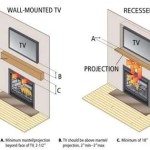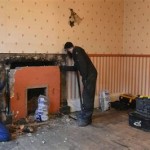Vermont Castings Gas Fireplace Insert Remote Control: A Comprehensive Guide
Vermont Castings gas fireplace inserts provide a convenient and efficient way to add warmth and ambiance to a home. A critical component enhancing this convenience is the remote control. This article provides an in-depth understanding of Vermont Castings gas fireplace insert remote controls, covering their functionality, features, troubleshooting, and maintenance.
Gas fireplace inserts offer numerous advantages over traditional wood-burning fireplaces, including ease of use, consistent heat output, and reduced maintenance. The remote control further simplifies operation, allowing users to adjust the flame height, room temperature, and other settings from the comfort of their seating area. Understanding the intricacies of these remote controls is essential for optimizing the performance and enjoyment of a Vermont Castings gas fireplace insert.
The specific features and functionalities of a Vermont Castings gas fireplace insert remote control can vary depending on the model and year of manufacture. However, most models share a set of common functions and operational principles. Therefore, this guide provides a general overview applicable to a wide range of Vermont Castings gas fireplace insert remote control systems.
Understanding the Basic Functionality
The primary function of a Vermont Castings gas fireplace insert remote control is to manage the essential operations of the fireplace. This includes turning the fireplace on and off, adjusting the flame height, and setting the desired room temperature. These basic features are essential for convenient and efficient operation.
Typically, the remote control utilizes radio frequency (RF) signals to communicate with a receiver unit located within the fireplace insert. This receiver unit then relays the commands to the gas valve and other components responsible for controlling the flame and heat output. RF communication provides a reliable connection, even through walls or other obstacles, allowing for greater flexibility in remote control placement.
Many remote controls feature a digital display that shows the current room temperature, the set temperature (if in thermostat mode), the flame height setting, and other relevant information. This display allows users to easily monitor the fireplace's status and make adjustments as needed. The display often includes backlighting for improved visibility in low-light conditions.
The on/off button is generally the most prominent button on the remote control. Pressing this button will typically ignite the pilot light (if it is not already lit) and then activate the main burner. Pressing the button again will shut off the main burner and, in some cases, extinguish the pilot light entirely. Some models include a separate pilot light control button.
Flame height adjustment is another crucial function. Dedicated buttons, often marked with up and down arrows, allow users to increase or decrease the flame height to their desired level. This feature enables fine-tuning of the heat output and the visual appeal of the flame.
Many Vermont Castings remote controls include a thermostat mode. When activated, the remote control will monitor the room temperature and automatically adjust the flame height to maintain the set temperature. This provides consistent and energy-efficient heating, ensuring the room remains at a comfortable level without requiring manual adjustments.
Some remotes offer additional features, such as a timer function that allows the fireplace to be set to automatically turn on or off at specific times. This can be useful for preheating a room before arrival or for ensuring the fireplace is off when it is not needed. A child safety lock may also be included, preventing unauthorized use of the fireplace.
Power is typically supplied to the remote control by batteries, usually AAA or AA size. The remote control will often display a low battery warning to alert the user when the batteries need to be replaced. It is essential to use high-quality batteries and replace them promptly to ensure reliable operation of the remote control.
Troubleshooting Common Issues
While Vermont Castings gas fireplace insert remote controls are generally reliable, occasional issues may arise. Understanding common problems and their potential solutions can help users quickly resolve these issues and restore the fireplace to proper operation.
One of the most common issues is a lack of communication between the remote control and the receiver unit. This can manifest as the fireplace not responding to commands from the remote. The first step in troubleshooting this issue is to check the batteries in the remote control. Low batteries are a frequent cause of communication problems. Replacing the batteries with new ones is often the solution.
If the batteries are not the issue, the problem may lie with the receiver unit or the remote control itself. Verify that the receiver unit is properly connected to the fireplace and that the power source is active. A tripped circuit breaker or a disconnected power cord could prevent the receiver unit from functioning.
Another potential cause of communication problems is interference from other electronic devices. Wireless routers, cordless phones, and other RF devices can sometimes interfere with the signal between the remote control and the receiver unit. Try moving these devices away from the fireplace and the remote control to see if this resolves the issue.
In some cases, the remote control and receiver unit may need to be re-synchronized. This process typically involves pressing and holding a specific button on both the receiver unit and the remote control to establish a new connection. Refer to the owner's manual for specific instructions on how to synchronize the remote control and receiver unit for the particular Vermont Castings model.
If the fireplace ignites but the flame is weak or unstable, the problem may not be with the remote control itself, but rather with the gas supply or the burner components. Ensure that the gas valve is fully open and that there are no obstructions in the gas line. A qualified technician may be needed to inspect and clean the burner components.
If the thermostat mode is not working correctly, the remote control may not be properly calibrated. Some remote controls allow users to adjust the thermostat calibration to ensure accurate temperature readings. Consult the owner's manual for instructions on how to calibrate the thermostat.
If the remote control display is blank or shows error messages, this could indicate a problem with the remote control's internal circuitry. In this case, it may be necessary to replace the remote control entirely. Contact a Vermont Castings dealer or authorized service provider to obtain a replacement remote control.
Always consult the owner's manual for specific troubleshooting instructions and safety precautions before attempting any repairs or adjustments to the fireplace or the remote control. If unsure about any aspect of the troubleshooting process, contact a qualified technician.
Maintenance and Care Tips
Proper maintenance and care can significantly extend the lifespan and reliability of a Vermont Castings gas fireplace insert remote control. Following a few simple guidelines can help ensure the remote control continues to function optimally.
Regular battery replacement is essential. As mentioned earlier, low batteries can cause a variety of issues, including communication problems and inaccurate temperature readings. Replace the batteries in the remote control at least once a year, or more frequently if needed, to avoid these problems. Use high-quality alkaline batteries for best performance.
Protect the remote control from extreme temperatures and humidity. Avoid leaving the remote control in direct sunlight or near sources of heat, as this can damage the internal components. Similarly, avoid exposing the remote control to moisture or humidity, as this can cause corrosion and malfunction.
Clean the remote control regularly with a soft, dry cloth. Avoid using harsh chemicals or abrasive cleaners, as these can damage the surface of the remote control. Gently wipe away any dust or dirt that may accumulate on the remote control.
Store the remote control in a safe and convenient location when not in use. Avoid placing the remote control in areas where it may be accidentally damaged or lost. A dedicated remote control holder or a designated spot on a nearby table can help keep the remote control safe and accessible.
Periodically inspect the remote control for any signs of damage, such as cracks, loose buttons, or a damaged display. If any damage is detected, contact a Vermont Castings dealer or authorized service provider for repair or replacement.
If the remote control is not going to be used for an extended period, such as during the summer months, remove the batteries to prevent corrosion and extend the life of the remote control. Store the remote control in a cool, dry place.
By following these maintenance and care tips, users can help ensure the longevity and reliability of their Vermont Castings gas fireplace insert remote control, maximizing the enjoyment and convenience of their fireplace.

Vermont Castings Majestic Hand Held Remote Tsfsc Friendly Fires
A Solution For Those Impossible To Get Vermont Castings Remote Controls Hearth Com Forums Home

Vermont Castings Majestic Hand Held Remote Tsfsc Friendly Fires

Sky Tech Thermostatic Remote Control For Gas Stoves Fireplaces Mazzeo S

Vermont Castings Intrepid Gas Stove Mountain Home Center

Vermont Castings Intrepid Gas Stove Fireside Hearth Home

Vermont Castings Intrepid Direct Vent Gas Stove H2oasis

Vermont Castings Radiance

Vermont Castings Star Gas Stove Fireside Hearth Home

Vermont Castings Intrepid Dv Gas Stove Mazzeo S Stoves Fireplaces
Related Posts








